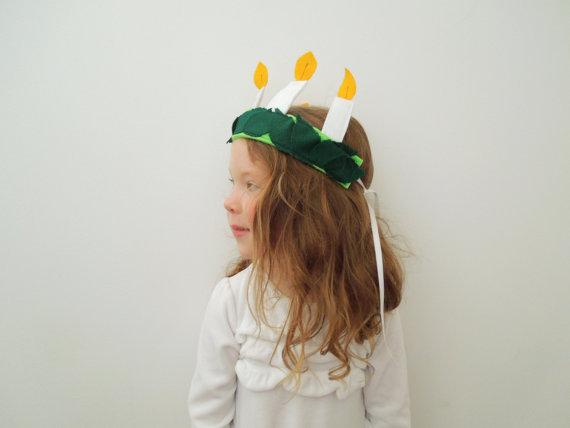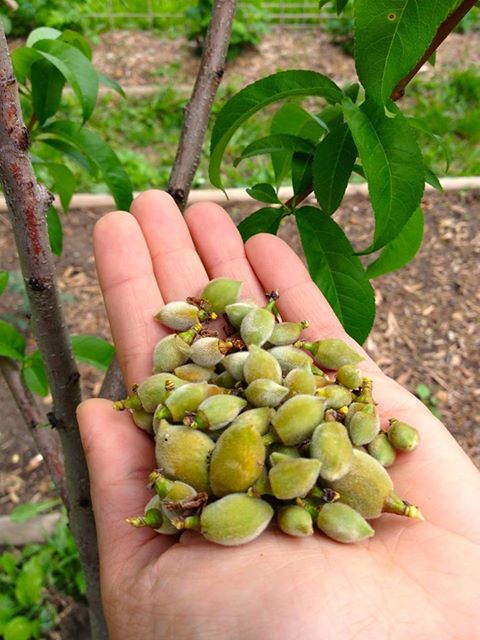It is Easter time and I find myself wanting to dye eggs. My children are all grown and have married and moved far away. I have no grandchildren near. Why do I want to dye Easter eggs? Tradition. Traditions! (Cue Tevye from “Fiddler on the Roof.”) We always dyed Easter eggs and then had creamed eggs on toast to use them all up, yellow yolks and whites streaked with blue and pink and purple dye that had leaked through any inevitable cracks, and all. My mother did it, I do it, and my daughter said, “I still do this. Even if no one else wants to decorate eggs, I boil them and dye them so I can have creamed eggs on toast.”
My
dad was in the Air Force, so we moved often and saw many different traditions
as we lived in different places. In
Montgomery Alabama, Easter meant a new fancy dress with white gloves and an
Easter hat. In Virginia, there were
Easter egg hunts. My Jewish friends had their own traditions with Passover and
the tradition-laden Seder. In Spain
there were processions with images of honored Saints carried by hooded and
robed men. In my own home, as a
Christian, I woke my children up on Easter morning with a “Hallelujah, He is
risen”.
Children
become very attached to rituals and traditions.
How many times has your child demanded the same bedtime book ad nauseum,
and you can never skip or shorten a part.
Kids love rituals of all types: Those bedtime routines, the birthday
meal, weekly movie nights, playing board games together. Holidays, birthdays, weddings and funerals
provide a purpose for coming together. “It
gives us an opportunity to affirm our faith—not just in our beliefs or our
culture, but our faith in our families and the love we share.”1 It is like a bank. We deposit time, faith, love and energy to
the family bank and then, during difficult times, we can withdraw what we need. Family traditions are one of the deposits we
make to the family bank.2
Traditions strengthen
family bonds. They create a feeling of closeness and
togetherness, creating connections between family members. In our family, we have a traditional Cousins’
Conference, three days each year when teenaged cousins meet for lessons,
service, activities, swimming, hiking, and lots of bonding. After 30 years, we are now down to 2nd
and 3rd cousins and they come from many states to participate. These bonds last well into their adult years
and help them feel they are not alone, but part of something unique and
special.
As
family comes together, we realize what is truly the most important part of
life. Researchers have consistently
found that families that engage in frequent traditions report stronger
connection and unity than families that haven’t established rituals together.
Photo by Catherine Scott
Photo by Catherine Scott
Traditions give children a
sense of identity and belonging. Especially in their teen
years, our children can feel lost and not sure where they belong. Family tradition helps them see that they
belong to a family. My husband’s father
used to say, after telling family stories, “You are a Brown, and that means
something.” It gives kids a feeling of
security, safety, and comfort. They know
who they are as an individual member of a whole family. Traditions teach children the story of their
cultural or religious history. Psychologist Marshal Duke has found that
children who have an intimate knowledge of their family’s history are typically
more well-adjusted and self-confident than children who don’t.3
Traditions link
generations. They tie us upward into our family tree and
downward into the families that are brand new, giving our children both roots
and wings. They honor our ancestors and
welcome new in-laws and babies. One
thing my husband loved doing at family reunions is to listen to the older aunts
and uncles (who were great story tellers) reminisce about their youth and
adventures. Kids get to know and
understand a little about the lives of a generation before, closing that
proverbial gap.
Sociologists
and family researchers have found that when grandparents are involved in their
children’s lives, the children have “fewer emotional and behavioral problems.”3
Continuing family traditions that have passed down through multiple generations is a great way to teach your children about your family’s cultural and religious history. My brother’s wife played the part of Santa Lucia, wearing a wreath of candles, gently singing awake her children Christmas morning to honor their Scandinavian ancestry. As her children grew, a daughter took the part of Santa Lucia, continuing the tradition through another generation.
Traditions teach heritage
and values. “One of the main purposes
of rituals and traditions, whether religious or secular, is to impart and
reinforce values. Through nightly
bedtime stories, the value of reading and learning is exemplified; through
daily family prayer, the importance of faith is re-enforced; and through
regular family dinners or activities, a sense of family solidarity is
instilled.”3
Photo by National Cancer Institute
Traditions build memories. Memories are the moments we look back on to laugh about and to smile about because they made us feel so good on the inside. They are the topic of conversation at family gatherings. “In her book Ask the Children Ellen Galinsky tells of asking children what they would remember most about their childhood. Most of the kids responded by talking about simple everyday traditions like family dinners, holiday get-togethers, and bedtime stories,” rather than thing oneliness, boosting generosity towards strangers, and staving off anxiety.”3
Traditions build memories. Memories are the moments we look back on to laugh about and to smile about because they made us feel so good on the inside. They are the topic of conversation at family gatherings. “In her book Ask the Children Ellen Galinsky tells of asking children what they would remember most about their childhood. Most of the kids responded by talking about simple everyday traditions like family dinners, holiday get-togethers, and bedtime stories,” rather than thing oneliness, boosting generosity towards strangers, and staving off anxiety.”3
Family
traditions can also honor and instill memories of departed family members, as
we tell stories about them and their values.
s
they had.3
Positive
childhood memories can reach into adulthood, helping us be happier and more
generous. “Recent research has shown
that reflecting fondly on one’s past actually provides a myriad of positive
benefits including counteracting l
Traditions help children
be more grounded and focused. In the hectic pace of
life, tradition helps us see what is truly important. It anchors us to our families and emphasizes
the love we have for each other. It
teaches us how important it is to be together.
It gives our children something to hold on to.
“Psychologist
Marshal Duke has found that children who have an intimate knowledge of their
family’s history are typically more well-adjusted and self-confident that
children who don’t. There’s something
about understanding your past and knowing you belong to something bigger than
yourself that instills confidence.”3
Traditions help our
children be more resilient. Paradoxically, the anchor
of tradition allows our children to be resilient, confident that they are loved
and knowing how to express love to others.
They learn to navigate change.
Researchers have found that even when the family itself causes stress,
family traditions and rituals can provide comfort and security to children. For example, one study found that “families
of alcoholics are less likely to transmit alcoholism to the next generation if
they maintain the family dinnertime ritual and do not allow a parent’s
alcoholism to interfere with this time together.”3
Family
traditions provide children comfort when there are few constants in their life,
especially when there is change, or grief.
A move, a divorce, a death of a loved one makes everything new and
strange for them, but at least they know that there is still Taco Tuesday and
every Saturday they still have chores followed by a trip to the ice cream parlor.
Merging family
traditions. When a couple marries,
they need to merge the traditions of each of their families. Your family always had cornbread stuffing at
Thanksgiving dinner, while his had bread stuffing. Which tradition wins out?
My
husband’s father used to tell his kids, “We’re going on a trip. Pack your clothes, we’re leaving in an
hour.” My mother, on the other hand,
would plan weeks ahead, what we were going to do, what we were going to see, so
we wouldn’t miss a thing. We had to
combine his family’s spontaneity resulting in surreptitious moments and my
family’s planning so we’d find the jewels we might have otherwise not known
existed.
A
blended family with stepparents can become a nightmare, “because we and our
children base a lot of our emotional and family lives in traditions.”1 It’s a good idea to talk as a family about
which traditions you’ll continue in your new family and which ones you will let
go. Get creative, try to compromise, and
find ways to combine traditions, or better yet, create your own new family
traditions.
Letting go of
traditions. Families are fluid. They have seasons. Traditions that worked when your children
were toddlers might be resented when they’re teenagers. Holding onto traditions that no longer work
does nobody any favors. While you should
work hard to create and maintain long-lasting traditions for your family, don’t
try to force a tradition if it’s creating more stress than joy. Feel free to create new traditions that
better fit a changing family and eliminate others. As your parents age, maybe your mother
shouldn’t need to be in charge of having all family get-togethers at her
house. As your son marries, maybe it’s
OK for his wife to bring baked yams instead of the traditional candied yams
you’ve always had. “It’s important to be
honest about what a tradition means to you, and what parts of that tradition carry
the most meaning. What is important is
to keep our families warm and strong.
Anything less just isn’t worth the ruffled feathers.”1
Some
family traditions are just plain wrong and need to be eliminated. Any tradition that lowers a family member’s
worth or lessens their value, or that teaches incorrect values should be
purged. A tradition of the men in the
family going out on a drunk every Saturday night is one that needs to be
rejected. A tradition where the wife is
subservient should be removed.
Creating traditions. There is no cookie cutter, no mold, no pattern for
what your family traditions should look like.
Meg Cox, author of “The Book of New Family Traditions,” suggests that
families have four types of traditions in addition to those that come with
holidays or birthdays.3
· Daily Connection
Traditions. These are the small things
you do every day to enforce family identity and values. These come from intentionally developing
positive rituals around the routines of day to day life such as family dinner,
chores, and bedtime. Things such as
having everyone sharing the best part of their day at dinner time. Once I had two daughters that were constantly
fighting and putting each other down. We
started circling the table and having everyone say one good thing about every
other family member. At first, they had
a hard time finding something good to say.
But after a while, they started looking for the good things so they
would have something to say.
Many parents have a bedtime ritual, such as reading a story
and saying prayers.
My mother used to sing bedtime songs to me, ones her mother sang to her. I also sang songs to my children as they were going to sleep.
My mother used to sing bedtime songs to me, ones her mother sang to her. I also sang songs to my children as they were going to sleep.
· Weekly Connection
Traditions. These are special weekly activities
like “a special Saturday morning breakfast or a weekly game night.”1 We had a weekly family night with a short
lesson, game, and treat. Of course, they
looked forward to the game and treat more than the lesson, and I still
remembering playing tag with my kids on the front lawn. Since the youngest couldn’t catch anyone but
me, I was too often It. When I was a
child, every Sunday morning we would all get on my parent’s bed, lying in every
direction, and read the Sunday funnies.
· Seasonal Connection Traditions. My children used to make May Day baskets from paper and fill them with flowers from our garden and take them to the neighbors. They would hang them on the doors and ring the doorbell and run or hide.
Annual ski trips, or trips to the beach, or
visiting out-of-town relatives during summer vacations all count. Our family has annual extended family
reunions, and now our children have children, they all still want to come.
· Life Changes
Traditions. These are to celebrate the
special moments in your family. Things
like starting school, birthdays, graduating, honors won, coming of age.
I
asked my friends and extended family for their own traditions that they
love. Here are some of their responses:
1. Reading stories before
bed, family night snacks, making corny jokes, summer trips.
2. Attending family reunions,
family parties, family weddings, all things ‘family’.
3. One-on-one dates with our children, children interviews.
4. We have always reenacted
the Nativity on Christmas Eve, sometimes using a live baby Jesus and sometimes
we use a doll. Even the big kids
participate. It isn’t always perfectly
spiritual but it is always heartwarming.
5. Our annual family hike in
the Tetons.”
6. After our dates, we’d
always go into our parent’s bedroom and Mom would be so excited to hear about
our dates, what we did and the wonderful time we had. She never criticized or berated us, but
asked, “Did he hold your hand?” or ‘Did you kiss?’ We could tell her
everything.
7. Sunday night dinner of
grilled cheese sandwiches and tomato soup, while my mother read to us. It never dawned on me until I was a mother
that she was missing her dinner.
8. We children making and
serving dinner for our parents on their anniversary, with menus, waitresses
(us), and candlelight.
9. Old fashioned home-made
ice cream each Labor Day.
10. Camping and hiking trips,
how we used to sleep out under the stars.
How it always seemed to take longer to hike in than to hike back
out. One trip, while listening to the
adults talking on the night drive home, I created my own five rules for wealth:
Pay tithing, Learn so you can Earn, Save what you can, Invest what you saved,
and Take care of your stuff so you don’t have to replace it.
11. Playing the alphabet game
on long car trips. Singing silly songs
together in the car.
12. Caroling and cookies for
the neighbors at Christmas.
13. When I was a teen and my
father wanted to talk seriously with me, he always took me on a walk.
14. Homemade cards for aunts and uncles and cousins for all holidays.
15. Big extended family dinners.
14. Homemade cards for aunts and uncles and cousins for all holidays.
15. Big extended family dinners.
What
are the traditions you loved as a child?
What are ones you have in place with your own children? What traditions would you like to create?
1.
Are family
traditions important? By Jacob Clifton
How Stuff Works
2.
Why We Need to
Maintain Family Tradition by Daffnee Cohen
Huffpost
3.
Creating a
Positive Family Culture: The Importance of Establishing Family Traditions by Brett &
Kate McKay The Art of Manliness

























